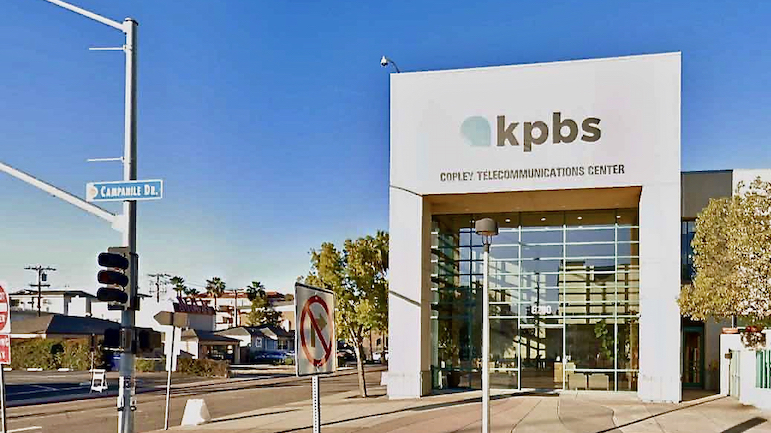How KPBS expanded its reach to San Diego’s Latino communities

© Google Earth 2020
When Alexandra Bacaj heard that the American Press Institute was putting together a program to help newsrooms engage diverse audiences, she immediately encouraged her colleagues at KPBS to apply.
Bacaj, a digital marketing producer for the dual licensee in San Diego, knew that station leaders wanted to increase their outreach to the region’s Spanish-speaking residents in new ways. About a quarter of the county’s residents speak Spanish, some exclusively, according to U.S. Census data. That represented a sizable community that may not be tuning in to KPBS — and not just because of the language barrier.
“We had a project we felt was perfect for this,” Bacaj said. “Every election year we go all-out. We create a voter hub which contains things like our ballot guide, which we do in collaboration with BallotReady and CalMatters. We also do tons of interviews with candidates, explainer videos, explainer articles and explanations of propositions and ballot measures.” Since KPBS had already planned to produce Spanish-language versions of its online election reports, Bacaj and a collection of colleagues from the social media team and newsroom seized the moment.
In comes API. The nonprofit, which along with a bevy of other journalism organizations advocates for diversity, equity and inclusion advancements in the field, partnered with the Maynard Institute to create a five-month program that coaches newsrooms on how to deliver Spanish-language content while repairing and building relationships with Latino audiences. The program, offered to alumni of API’s Table Stakes change-management training for newsroom leaders, is funded by the Knight-Lenfest Local News Transformation Fund, a joint initiative of the Knight Foundation and the Lenfest Institute for Journalism.
KPBS was selected for the “community sprint,” which ran from June to November 2022. Other participants included commercial newspapers in Milwaukee; Charlotte, N.C.; Tucson, Ariz.; and Northern California. Participants from each news organization bounced ideas for their respective initiatives off one another and were paired with coaches who advised and supported them in implementation and rollout. KPBS’ mentor was Fernando Soto, CEO and publisher at Nuestro Estado, a Spanish-language publication based in Charleston, S.C.
Beyond ‘our traditional audience bubble’
For its API project, KPBS leveraged Guía Electoral, a Spanish-language landing page on its website that combined voter education content with news coverage of the 2022 elections. Some of the coverage was pulled in from news outlets like CalMatters and the Associated Press. KPBS worked with an outside service to translate its online election guide into Spanish.
In addition to Bacaj, KPBS assembled a team that included Elma González Lima Brandão, a digital editor who curated the news items that appeared on Guía Electoral. Trisha Richter, director of grants and engagement, lined up partners that KPBS worked with to spread word about the election information. The social media team also pushed out the news that KPBS’ election coverage was available in Spanish.

“We traditionally have not provided Spanish-language content, so we do not have a Spanish-language audience,” Bacaj said. “Our challenge here was really, ‘How do we get this information out to Spanish speakers when that’s outside of our traditional audience bubble?’”
In theory, KPBS could have gone at the job completely alone, Bacaj said. But working within API’s program brought “the kind of structure and guidance and intentionality” of a cohort.
KPBS began translating and providing Spanish-language versions of its election news during the primaries, months before the team started working within API’s cohort during the general election. Bacaj called that period a “trial run,” when the station learned it needed to improve its partnerships with organizations that serve large subsets of the region’s Spanish speakers.
During the API sprint, KPBS created a new partnership with the San Diego Public Library to distribute bookmarks with QR codes that, if scanned, brought people to Guía Electoral. The station also worked with local YMCAs and Alliance San Diego, a community advocacy organization, to share the voter hub on social media. In the end, the initiative helped the station achieve 350% growth in users visiting the Spanish-language voter hub between the primary and general elections.
‘Make sure you’re delivering value’
One of KPBS’ most fruitful relationships was with San Ysidro Health, a clinic originally established in 1969 alongside the U.S.-Mexico border. It was founded by “a group of mothers in search of medical services for their children,” according to the organization. More than 50 years later, San Ysidro Health has expanded its network throughout San Diego County.
San Ysidro Health first started working with KPBS during the primary election season, before KPBS joined the API program. The health clinic published some of KPBS’ Spanish-language election news in its newsletter. It was essentially “‘Hey patients, this is information you can use for the primary election,’” Bacaj said. For the API project, she said, “we took it a step further with them and we provided video explainers, interviews with candidates, and clips they could run on their TVs in their clinic.”
Alejandra Perez, a spokesperson for San Ysidro Health, noted that a large portion of the clinic’s patients speak languages other than English, including Spanish, Arabic, Tagalog and Vietnamese. “More than anything, the partnership was a unique method of engaging our communities and making sure they have the resources they need,” she said. “It was just a brilliant project, and we look forward to continuing the partnership as we move forward.”
Heather Milne, a spokesperson for KPBS, said the partnership with San Ysidro Health was mutually beneficial. “It wasn’t us reaching out to them saying, ‘We just want to reach the people who come here,’” she said. “They had already identified in their own campaigns that voting is part of your health. They had their own initiative, so that’s why we started working together.”
Bacaj added, “You don’t want to be extractive with your partnerships. You don’t want to just be like ‘Can we use you for your reach?’ You want to make sure that you’re delivering them value and that they see that as something that delivers their constituents value.”





